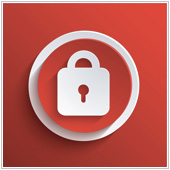 Is your healthcare practice still accepting and confirming appointments via email, phone calls, or in-person visits? The problem with manual appointment scheduling is that it can be time-consuming and prone to error. It can lead to double bookings and missed appointments, which can negatively impact your business. Fortunately, an online scheduling system can help address such issues.
Is your healthcare practice still accepting and confirming appointments via email, phone calls, or in-person visits? The problem with manual appointment scheduling is that it can be time-consuming and prone to error. It can lead to double bookings and missed appointments, which can negatively impact your business. Fortunately, an online scheduling system can help address such issues.
An online scheduling system is a web-based software application that allows patients to schedule appointments with healthcare providers through an online platform. These systems work by providing patients with a user-friendly interface where they can view available appointment times, select a time that suits them, and confirm their appointment. Healthcare providers can then manage these appointments through a centralized dashboard, where they can view their schedules, make changes, and send automated reminders to patients.
Online scheduling systems offer plenty of benefits for healthcare practices.
Attracts more potential new patients
When searching for a new doctor or specialist, many people are now less likely to make calls. They prefer to get in touch with a healthcare provider whose information and online scheduling system are available online. This means that offering an online scheduling option can give your practice a competitive advantage in attracting new patients.
Enables appointment scheduling after clinic hours
Many online scheduling systems are available 24/7. This allows patients to book appointments even when your clinic is closed. They can simply view all the available appointment schedules on your website and plan their visits accordingly.
Frees up staff to better care for patients
Online scheduling systems automate many administrative tasks associated with appointment scheduling, such as sending reminders and confirmations. They also help to reduce the number of phone calls and emails that your staff receive regarding appointment scheduling, freeing them up to focus on your patients.
Reduces no-shows and cancellations
An online scheduling system can help reduce the number of no-shows and last-minute cancellations by providing patients with automated appointment reminders and enabling them to easily reschedule appointments if needed. This allows you to optimize your schedule and resources.
Provides valuable data
With an online scheduling system, you can receive valuable data on patient scheduling patterns. You can then analyze this data so you can make better decisions when it comes to optimizing your healthcare practice’s appointment scheduling process.
If you need help with setting up online scheduling for your healthcare practice, our team of IT experts is ready to help. With our help, you can enjoy all the aforementioned benefits of an online scheduling system. Contact us today.

 As the healthcare industry continues to evolve, so do patient expectations. Aside from receiving high-quality care, patients now also expect convenient and hassle-free experiences when scheduling appointments with healthcare providers. You can easily exceed these expectations with an online scheduling system.
As the healthcare industry continues to evolve, so do patient expectations. Aside from receiving high-quality care, patients now also expect convenient and hassle-free experiences when scheduling appointments with healthcare providers. You can easily exceed these expectations with an online scheduling system. Healthcare organizations face a unique set of challenges when it comes to managing patient appointments. From scheduling conflicts to last-minute cancellations, managing appointments can be a time-consuming and frustrating task for both patients and healthcare providers. However, with an online scheduling system, you can streamline your appointment management processes and provide a more convenient experience for your patients.
Healthcare organizations face a unique set of challenges when it comes to managing patient appointments. From scheduling conflicts to last-minute cancellations, managing appointments can be a time-consuming and frustrating task for both patients and healthcare providers. However, with an online scheduling system, you can streamline your appointment management processes and provide a more convenient experience for your patients. When patients choose a healthcare facility, their primary consideration is quality of care. However, convenience and organization are also becoming increasingly significant factors, as patients want their experiences to be as simple and stress-free as possible. One way healthcare companies can do this is by deploying a reliable online scheduling solution.
When patients choose a healthcare facility, their primary consideration is quality of care. However, convenience and organization are also becoming increasingly significant factors, as patients want their experiences to be as simple and stress-free as possible. One way healthcare companies can do this is by deploying a reliable online scheduling solution. Hectic workdays can easily overwhelm any healthcare worker, so it’s always a good idea for them to seek out solutions to organize their busy schedules. A good way for healthcare businesses to help staff better manage their time is by using online scheduling solutions.
Hectic workdays can easily overwhelm any healthcare worker, so it’s always a good idea for them to seek out solutions to organize their busy schedules. A good way for healthcare businesses to help staff better manage their time is by using online scheduling solutions. The key to being a successful healthcare company — aside from providing great patient care — is getting the logistics and organization components of operations down to a fine art. You can accomplish this with the help of a reliable online scheduling solution.
The key to being a successful healthcare company — aside from providing great patient care — is getting the logistics and organization components of operations down to a fine art. You can accomplish this with the help of a reliable online scheduling solution. From attacks on mobile devices to ever-increasing types of malware, cybersecurity has never been more challenging. One of the best ways to stay protected is to be aware of cybersecurity threats. To that end, here are five common ways your IT systems can be broken into.
From attacks on mobile devices to ever-increasing types of malware, cybersecurity has never been more challenging. One of the best ways to stay protected is to be aware of cybersecurity threats. To that end, here are five common ways your IT systems can be broken into. Cybersecurity is a constant battle, but there are significant steps you can take to keep your IT defenses strong and effective, one of which is to increase your knowledge of security threats. Here are five common ways your business systems can be infiltrated.
Cybersecurity is a constant battle, but there are significant steps you can take to keep your IT defenses strong and effective, one of which is to increase your knowledge of security threats. Here are five common ways your business systems can be infiltrated. When it comes to business IT security, many small- and medium-sized businesses like yours often struggle to protect their systems from cyberattacks. One primary step is to be aware of online threats. Here are five common ways your systems can be breached.
When it comes to business IT security, many small- and medium-sized businesses like yours often struggle to protect their systems from cyberattacks. One primary step is to be aware of online threats. Here are five common ways your systems can be breached. Small- and medium-sized businesses can’t afford a data breach. According to
Small- and medium-sized businesses can’t afford a data breach. According to  Data breaches are a common occurrence in today’s business environment. While many businesses have turned to cloud applications for better productivity, scalability, and savings, some business owners worry that the cloud is more vulnerable to data breaches than an on-premises data center. The truth is that any computing environment is vulnerable if you don’t take steps to prevent a data security breach. Here are simple steps to protect your data in the cloud.
Data breaches are a common occurrence in today’s business environment. While many businesses have turned to cloud applications for better productivity, scalability, and savings, some business owners worry that the cloud is more vulnerable to data breaches than an on-premises data center. The truth is that any computing environment is vulnerable if you don’t take steps to prevent a data security breach. Here are simple steps to protect your data in the cloud. Despite its enhanced security features, cloud computing isn’t 100% safe from data breaches. A small- or medium-sized business still needs to be proactive in making sure their data is secure in the cloud. The following tips will help tighten cloud data security.
Despite its enhanced security features, cloud computing isn’t 100% safe from data breaches. A small- or medium-sized business still needs to be proactive in making sure their data is secure in the cloud. The following tips will help tighten cloud data security.